Test of the Yamaha C-5000 preamp and the Yamaha M-5000 power amplifier: return of the maestro
Only lazy did not draw an analogy between the musical instruments of Yamaha and the serious potential of its Hi-Fi equipment. And it’s true – it’s probably impossible to be closer to live music than the creators of virtuoso tools. However, creators and connoisseurs often look at a masterpiece from completely different angles. The Yamaha 5000 series has become a new corporate standard of music lovers sound, with the amplifying section of which we will get acquainted today.
Music lovers with experience well remember that in the 90s of the last century, the mood in the market of stereo components was decadent — not to say panicky. Home theaters were in vogue, and many people sincerely believed that multi-channel receivers would be able to show off not only powerful digital processing systems, but also a truly high-class sound. However, time has put everything in its place.
Movie lovers and not too demanding music lovers really make do with receivers, uncompromising movie maniacs buy video processors with external amplification, well, most audiophiles have returned to the good old two-channel technology.
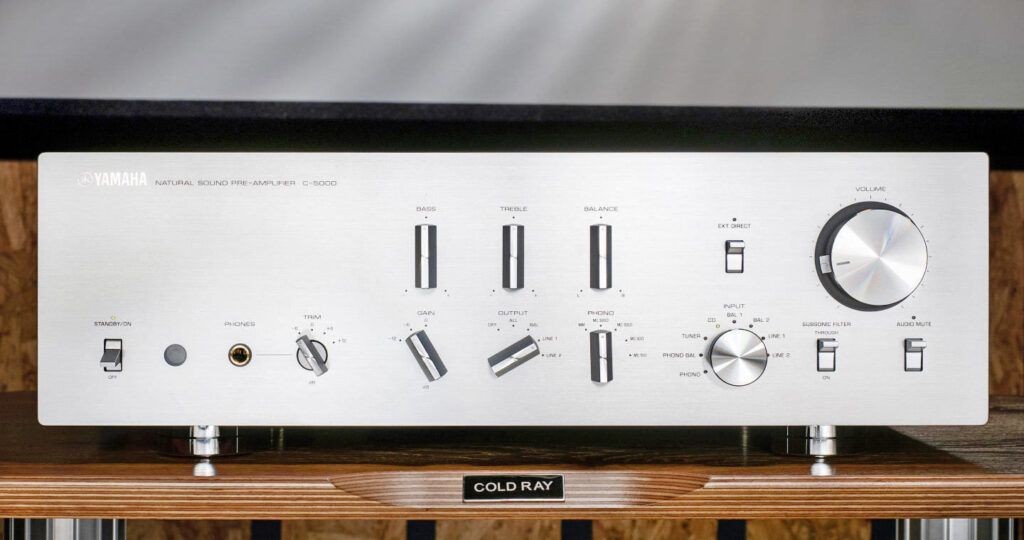
It is not surprising that the Japanese Hi-Fi patriarchs enthusiastically joined in the process of reviving traditional musical values. Yamaha in this sense, even a little podzaderzhala, however, the closer you look at the flagship series 5000, the clearer you realize that its developers did not waste time in vain.
Classics in an impenetrable shell
In conjunction with the Yamaha C-5000 preamp and the Yamaha M-5000 amplifier, the ideas tested a few years ago in the top-of-the-line A-S3000 model were developed. But an integralnik is an integralnik, and in a really serious setup, it is better to spread the delicate preprocessing and unbridled power of the terminal far away. And so our elite pair was born, while the integrated concept continued to develop with the A-S3200.
Of course, our tandem is decorated in the same style. The design will make even those who did not have a chance to join Hi-Fi in the era of its real heyday — the 70s and 80s-sigh nostalgically. However, the materials and the class of their processing in our case are such that in the old days, only a select few could afford to communicate with equipment of this level.
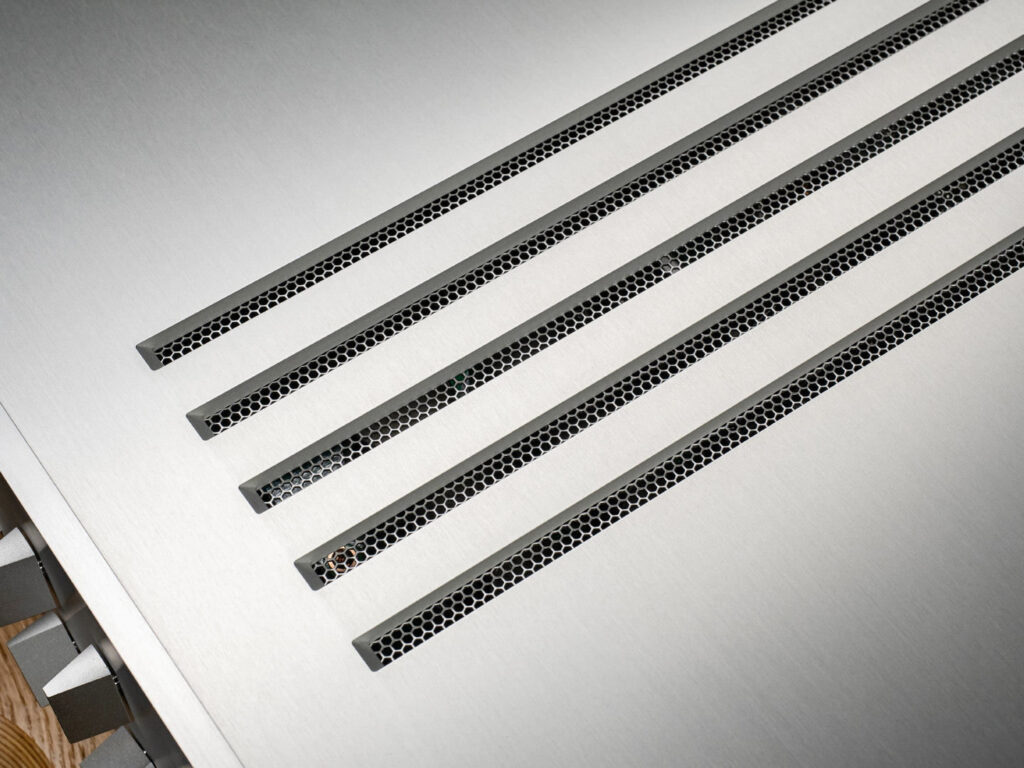
The front panel is an aluminum plate with a thickness of 9 (!) mm, the upper one is slightly thinner — 6 mm. There are two options for finishing: silver metal or black oxidized coating, but the side walls in any case remain wooden, with a multi-layer glossy varnish.
Interestingly, if you look at the body exactly in full face, they are almost invisible, and the devices take a strictly technocratic look. But it is necessary to slightly change the angle of view, as the bohemian piano varnish immediately makes you switch from thinking about the modes of amplification to the emotional and aesthetic perception of the world.
The controls can only be called luxurious, just the language does not turn. And it’s not even that they are all all-metal (this goes without saying), but in the processing class. Precision milling, soft polishing, the finest matting — it feels like the design of the dashboard itself has become the embodiment of some complex musical form.
By the way, in the arrangement of different-caliber handles on the Yamaha C-5000 panel, a certain rhythm is clearly traced. The knobs of the timbre block and the gain selectors, even with ventilation slots, form a harmonious linear structure.
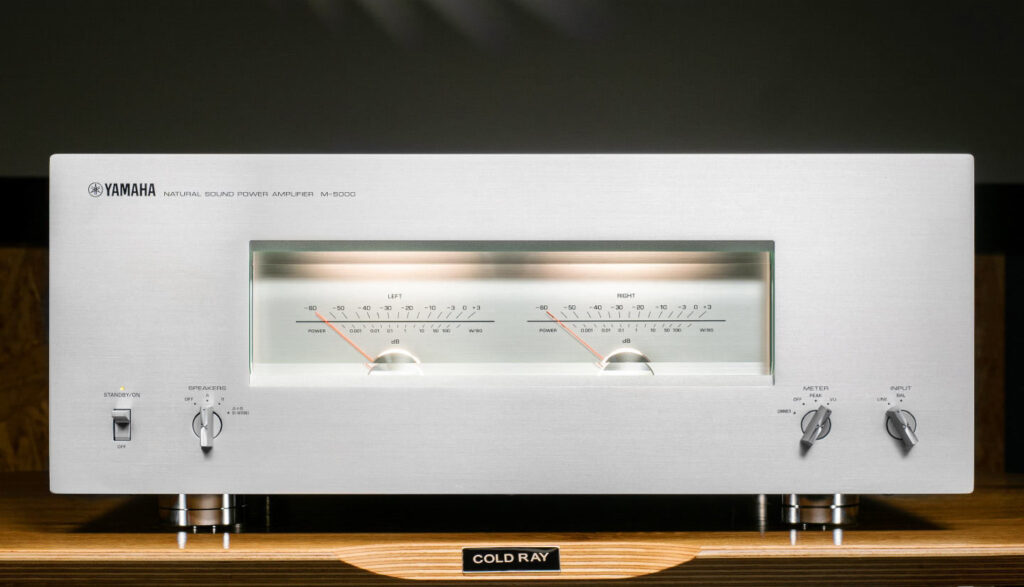
The key design element of the Yamaha M-5000 tip is, of course, the power indicator arrows. By the way, their warm lamp the backlight can also be adjusted or turned off completely. However, it is unlikely that anyone will decide on such blasphemy, because their movement in combination with music has a literally hypnotic effect on the brain steamed with everyday worries.
The topology of connectors in classic stereo is well known to everyone, we only note the presence of balanced switching and delightfully large acoustic terminals, carved from a monolithic brass billet.
And in the Yamaha C-5000, an advanced MM/MC phono corrector was found, but the digital ports are completely absent. Engineers didn’t optimize every millimeter of analog signal circuits to turn a purist component into a compromise digital harvester.
Pure analog
Imagine a wide wooden block, sawn along the fibers into two thin boards. If you expand them so that both planes of the cut look at you, you will get something like an open book. And its two “pages” look like an exact mirror image of each other. This is how the developers themselves explain the internal topology of the Yamaha C-5000 preamp.
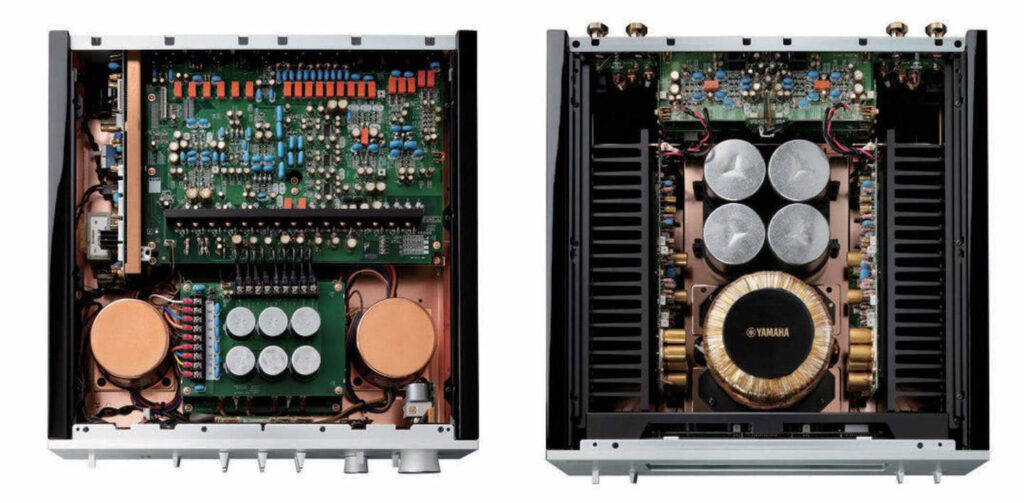
The separate boards of the two channels are stacked in a similar “book”, only closed. The result is an absolutely symmetrical closed mirror structure with minimal conductor lengths and identical signal propagation paths. The “pages” are powered by independent toroidal transformers enclosed in copper-plated screens. The power supply is floating, that is, the useful signal is reliably protected from interference in the grounding bus of the home wiring.
The circuitry of the S-5000 is fully balanced, including a switchable timbre block and a phono corrector. By the way, when using the GT-5000 turntable, also included in the five-thousandth series of Yamaha, you can get a fully balanced through path directly from the MS cartridge to the output stages of the terminal.
The head impedance can be selected from the values of 300, 100, 30 or 10 ohms, and this is done by a separate selector on the front panel — no DIP jumpers on the bottom of the case will have to be re-connected.
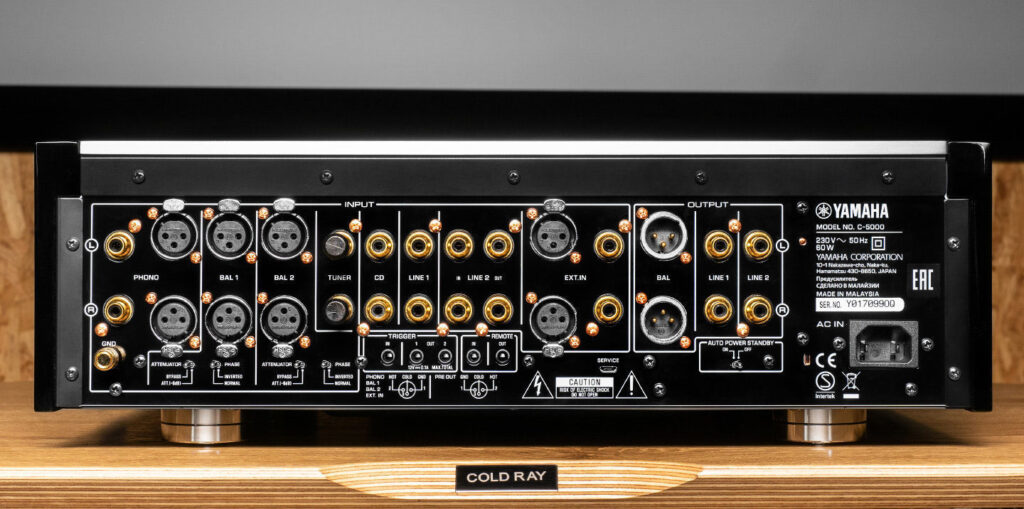
Another useful feature for vinyl producers is an infrasound filter (of course, also disabled), set to 15 Hz and a suppression level of -3 dB.
It also provides the ability to adjust the headphone gain relative to the main controller (-6, 0, +6 and +12 dB), as well as the output level for better matching with different power sources and speakers (-12, -6 and 0 dB).
As it is easy to guess, the Yamaha M-5000 terminal is also built according to a fully balanced scheme with a symmetrical topology, except that the power toroid with a capacity of 1.2 kVA is common to both channels. But all the massive elements, including the filter capacitors and the same transformer, are rigidly fixed on a sub-chassis of copper-plated steel plates with a thickness of 2 mm to suppress vibrations and resonances. This solution is called mechanical grounding by Yamaha.
The legs of the body contain brass elements and have a rather complex design with an internal spike and its integrated stop.

The symmetric push-pull circuit Yamaha M-5000 is assembled entirely on discrete elements and works in the AB class. The output is powered by high-power field-effect transistors (MOSFETs).
With a 4-ohm load on both channels and a non-linear distortion of 0.07% (20 Hz-20 kHz), the claimed power is 200 Watts per channel. Switching to the 8-ohm load reduces it exactly twice, and switching to the bridge mono mode increases it by the same amount.
The truth is always the same
The source in the test setup was the Technics SL-G700 network and SACD player. Acoustics-3-way 4-ohm Penaudio Serenade Singnature towers with a pair of 14.5 cm SEAS Exel drivers in the bass section.
The first touch to the handles of the included preamp can only be compared to driving a really expensive car. The stroke of the volume drum is perfectly smooth, elastic and uniform, which, however, is not surprising — the axis of the massive aluminum cylinder is planted on ball bearings.
The Mute key is a special pleasure to use. It does not interrupt any circuits — just when pressed, the main control automatically turns to zero.
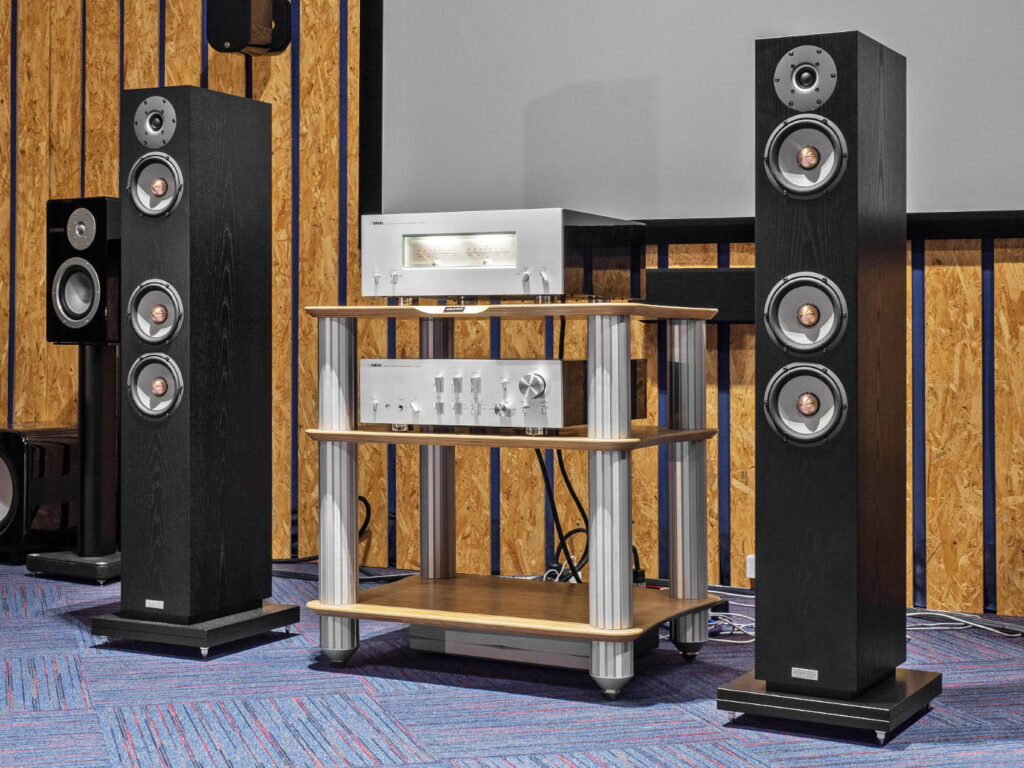
I start the audition with Karl Orff’s Carmina Burana, which is absolutely familiar to everyone, in a recording by the London Philharmonic Orchestra. At first, in the deathly silence, almost ghostly, but already surprisingly legible voices are barely outlined. Their energy quickly increases, the second choir enters powerfully, followed by the brass horns exploding, and now the room is plunged into a real symphonic abyss with many melodic and rhythmic parts. The dynamic range is simply huge!
In this whirlwind, our couple managed to show an extremely successful fusion of dynamic, microdynamic and spatial characteristics. In a crowded spectrum, it is very difficult to maintain the readability of individual instruments, and even more so to keep track of the intricacies of their parts, without losing the feeling of a single musical picture.
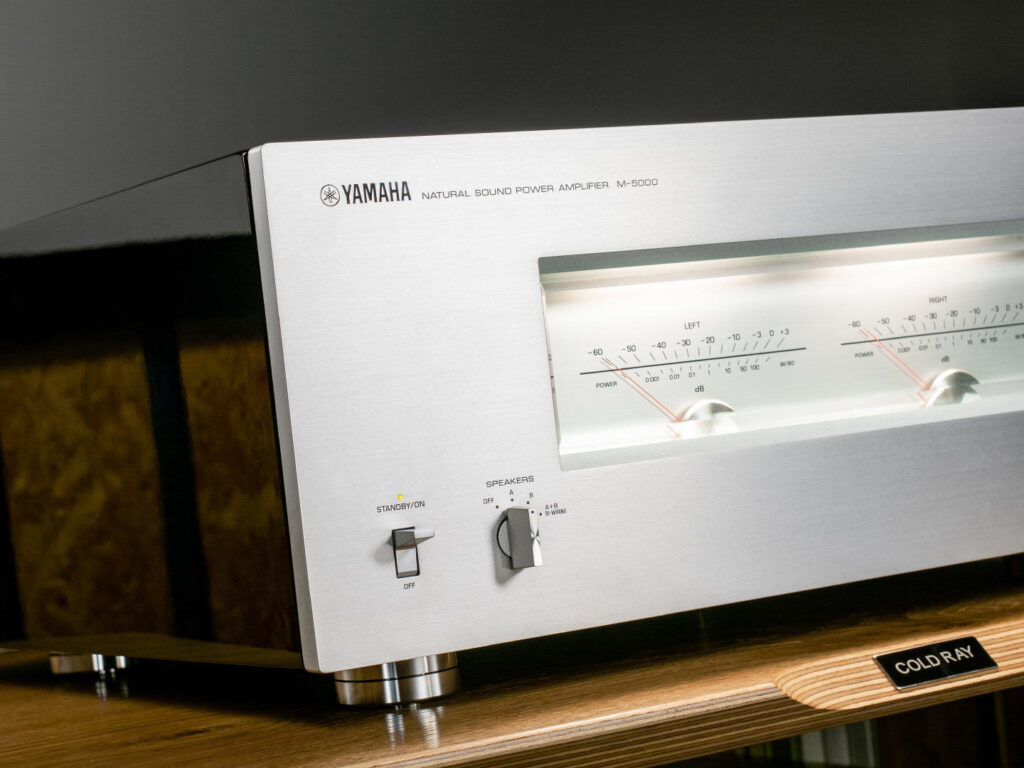
In the case of the Yamaha S-5000 and Yamaha M-5000, the detailed detail of the super-complex phonogram did not even require a serious increase in volume. Among other things, this means that the engineers clearly worked hard on the problem of the first watt.
On the other hand, the power capacity of the Yamaha M-5000 is much more impressive than it would be possible to assume, based on the passport capacity. The fast, confident development of powerful bass, as well as the transparency of the stage at high gain levels, hint at very impressive power reserves.
Noting along the way a decent spatiality (especially the excellent width of the music scene and the accuracy of positioning in it), we proceed to the analysis of the tonal balance in general and the features of vocal transmission in particular. By the way, the Finnish Penaudio Serenade Singnature speakers, far from the signature style characteristic of, for example, the Yamaha NS-3000 acoustics, contributed to the impartiality of such studies.
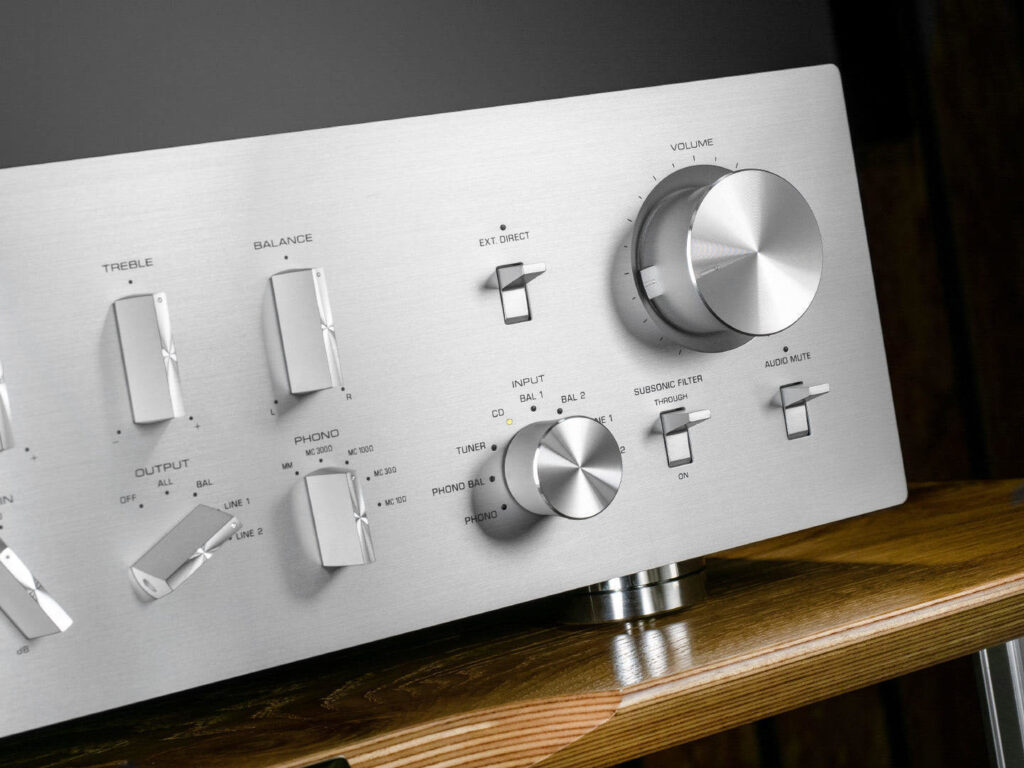
After listening to a fair number of familiar tracks, you realize that the tonal neutrality of our tandem is simply phenomenal. A variety of soloists and soloists — from Louis Armstrong to Jay-Z and from Beth Hart to Anna Netrebko — sounded very original, with easily recognizable brand features like thin, husky modulations in Zaz’s vocals that are far from the canons.
On the other hand, the lack of accents (read — traces of uneven frequency response in the voice sub-band) did not allow them to sound brighter or more pronounced than they were recorded. So the epithets “deep” or “velvety” could only be applied to those rare voices that deserve it by birthright.
Conclusion
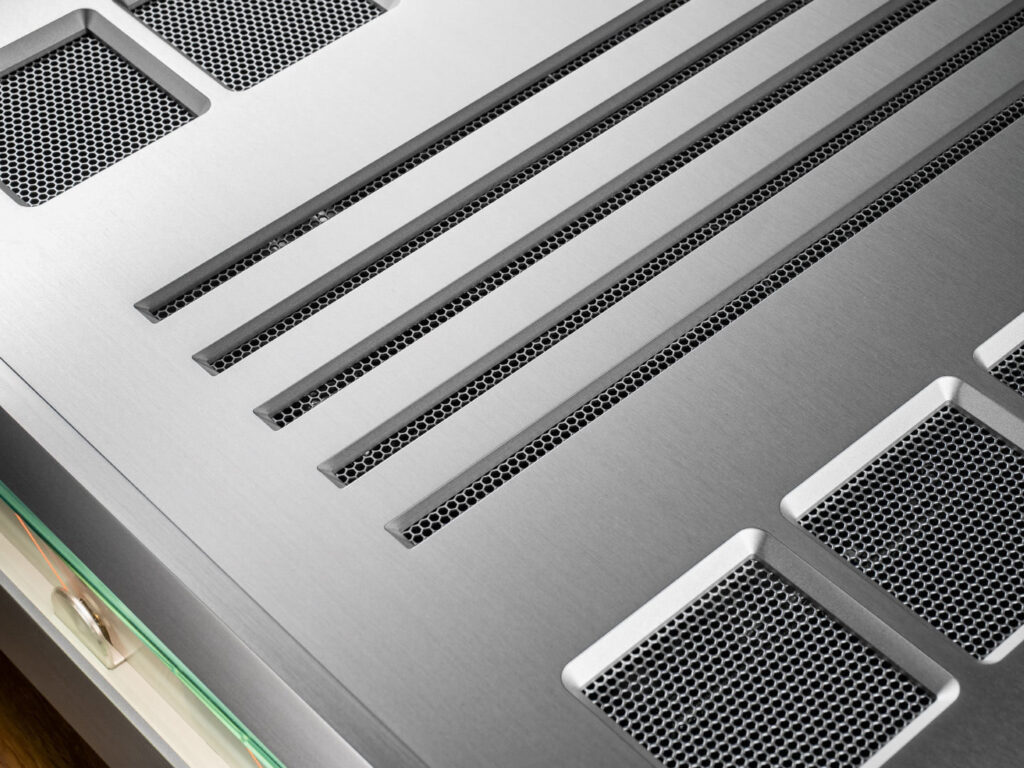
In general, the sound should be described as sharp and precise, with energetic, well-focused bass and filigree microdynamics on high. At the same time, it is interesting that no rigidity was found on the plates or sibilants. Maybe I’m a retrograde, but I think that in this sense, even the most sophisticated pulse circuits are still far from the good old push-pull cascades on the field cars.
In terms of spatial and tonal resolution, I want to compare the sound with a good chronometer — ultra-precise, but still mechanical, not digital. Since the mathematical correctness here is guessed rather than a cold calculation, but a conscious aesthetic position of the developers.
It is to preserve not only the authenticity of the recording, but also the breath of life, without embellishing a single note. Well, if the listener likes some other presentation, then let him develop a taste and get rid of the assumed euphony.
What will it cost to own a bundle of Yamaha C-5000 and Yamaha M-5000 in financial terms? As with other components of the series, in most countries their cost is not publicly announced. However, for example, in Australia, the price for each component is 13,000 local dollars, that is, about $10000 US Dollars. Frankly speaking – not a little. However, despite the price tag, you should definitely listen to them. And if your views on music coincide, it will be very difficult to find an analog in any price category.

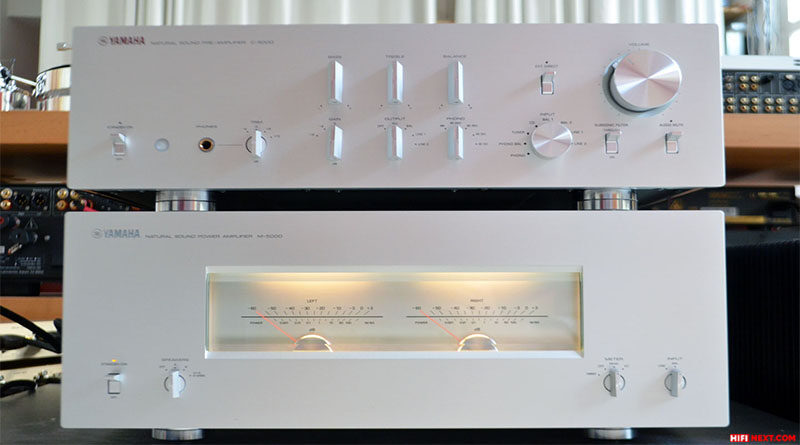
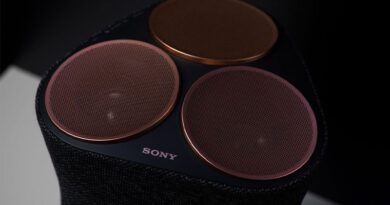
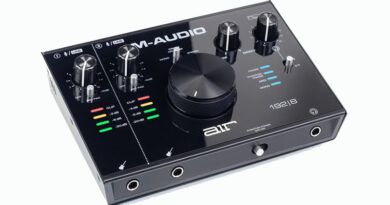
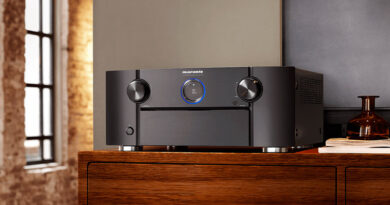
As with most things…beauty is in the eye of the beholder!
The 5000 Series by Yamaha are absolutely, positively beautiful but, ultimately, that is what you are paying for… .
The amp is well worth the cash as it is simply beautiful to listen and hear it all! The pre-amp is over kill as it is no longer necessary to have a preamp as what are you truly going to plug into it?
A tuner…perhaps, by a chosen few? A turntable…perhaps, by a few more? A DAC, perhaps, by many more still?
What is left? Yamaha knows this and it is why you cannot buy the M-5000 without buying the C-5000 as Yamaha will not allow them to be purchased…separately.
However, I know a dealer and I bought the M-5000 separately running a McIntosh MCD-600 through its variable output XLRs and combined, they are wonderous!